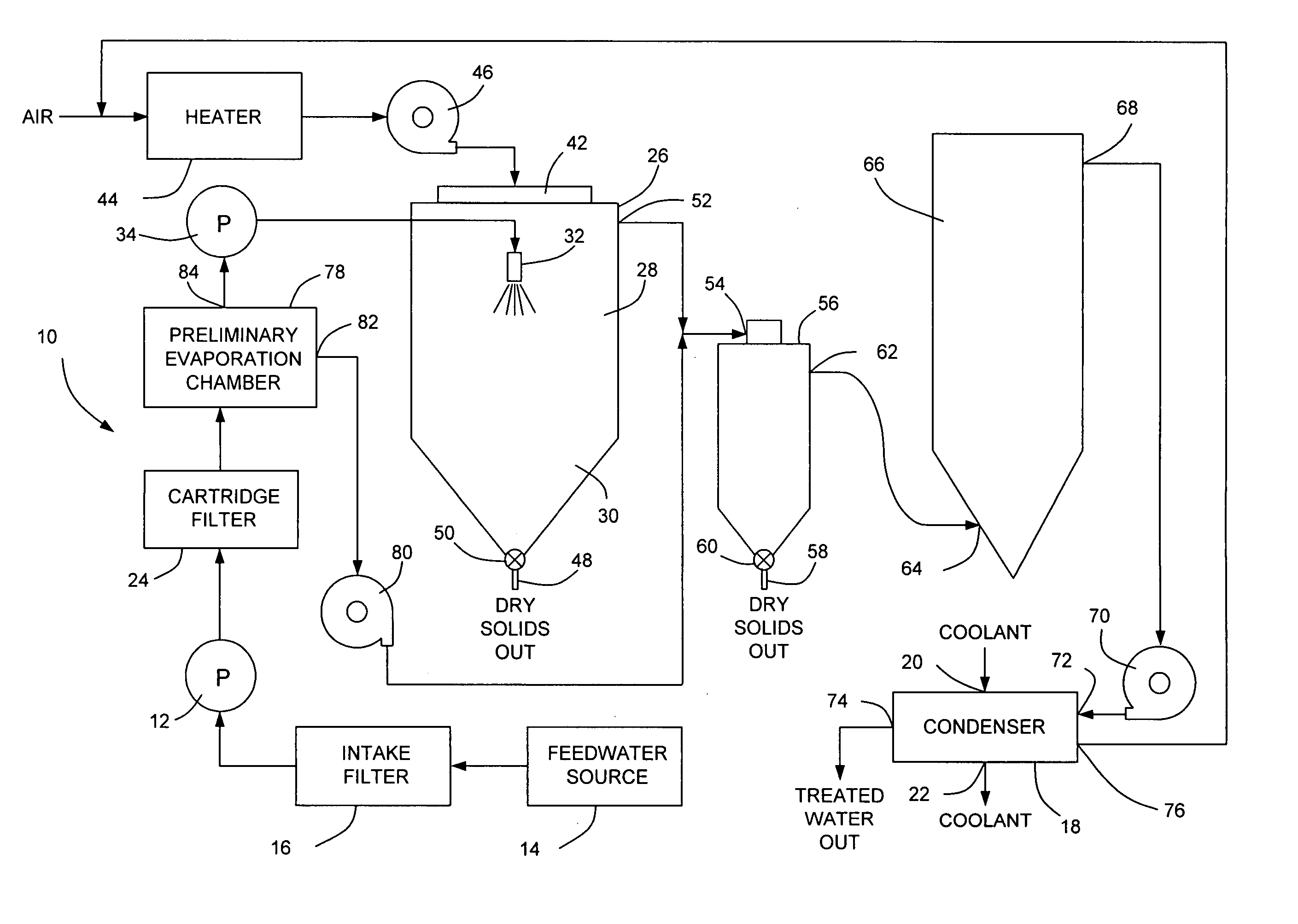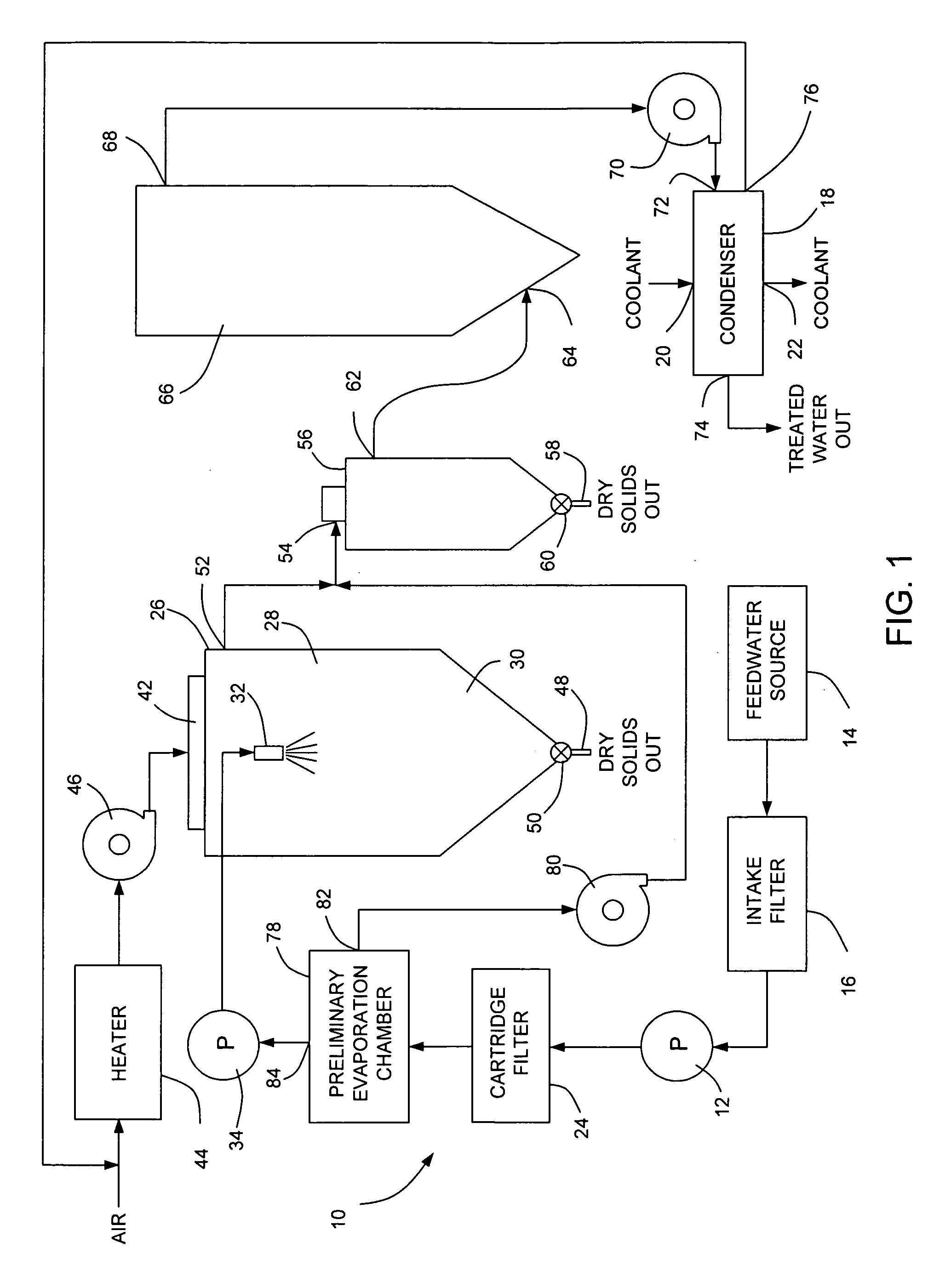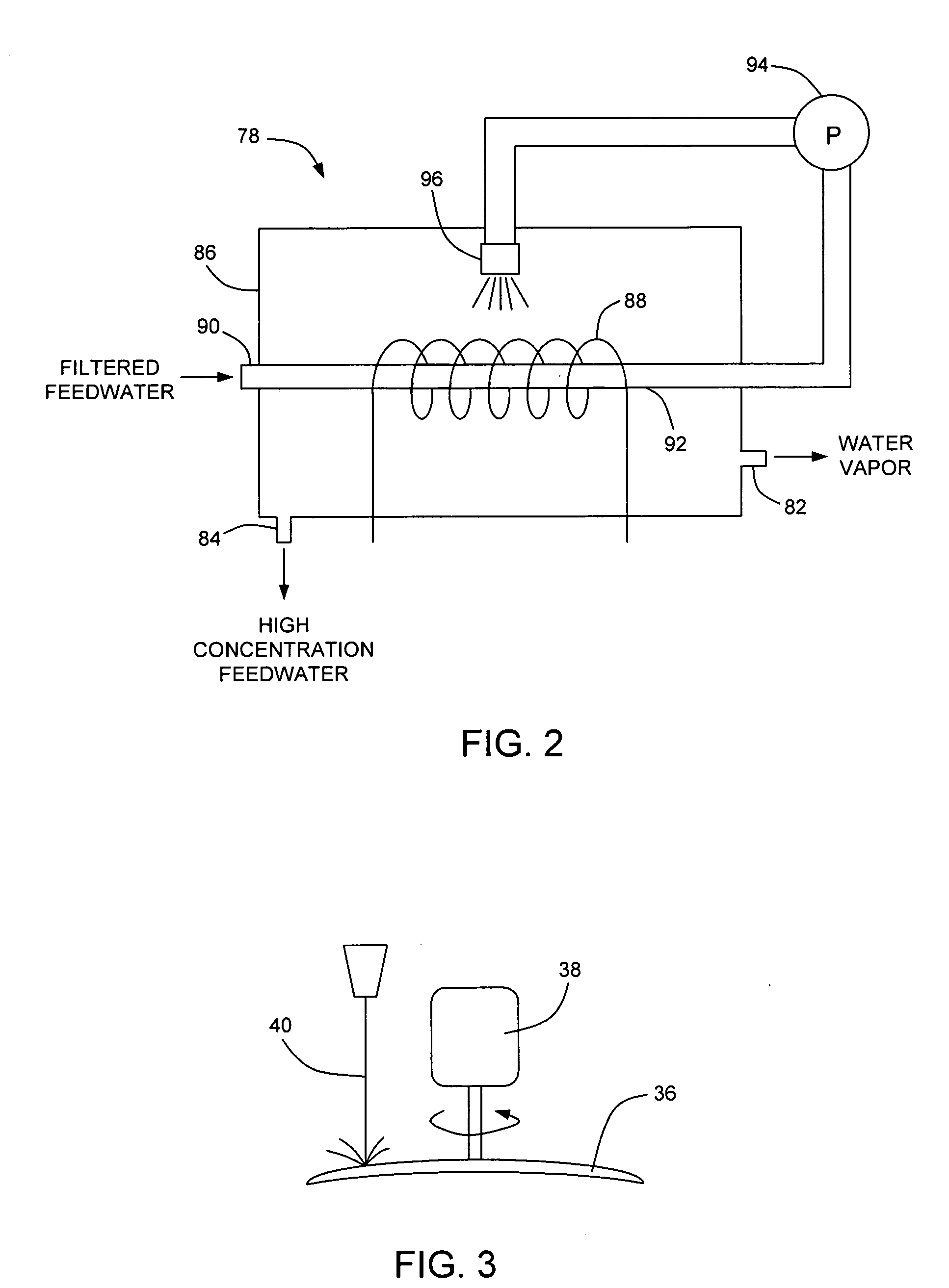Method and system for separating solids from liquids
a technology of solids and liquids, applied in the field of liquid treatment systems and methods, can solve the problems of extreme environmental damage to the aquatic life in the receiving body of water, the particular feature of current desalination technology has become an increasing environmental related problem, and the two aforementioned processes become increasingly less efficien
- Summary
- Abstract
- Description
- Claims
- Application Information
AI Technical Summary
Problems solved by technology
Method used
Image
Examples
Embodiment Construction
[0014] Referring to the drawings wherein identical reference numerals denote the same elements throughout the various views, FIG. 1 shows a system 10 for treating liquids carrying suspended or dissolved solids by separating the solids from the liquid. The system 10 is mostly applicable to treating aqueous solutions and / or suspensions, but can also be used for treating liquids other than water-based mixtures. The system 10 is particularly useful in desalinizing seawater by removing salt to provide potable water. Other treatable liquids include reverse osmosis concentrate and industrial wastewater. For purposes of convenience, the liquid being treated by system 10 is referred to herein as the “feedwater,” which is intended to include any type of liquid carrying suspended or dissolved solids.
[0015] The system 10 includes a supply pump 12 that pumps raw feedwater from a source 14 through an intake filter 16. The intake filter 16, which is preferably connected to the suction pipe of the...
PUM
| Property | Measurement | Unit |
|---|---|---|
| concentrations | aaaaa | aaaaa |
| temperature | aaaaa | aaaaa |
| temperature | aaaaa | aaaaa |
Abstract
Description
Claims
Application Information
 Login to View More
Login to View More - R&D
- Intellectual Property
- Life Sciences
- Materials
- Tech Scout
- Unparalleled Data Quality
- Higher Quality Content
- 60% Fewer Hallucinations
Browse by: Latest US Patents, China's latest patents, Technical Efficacy Thesaurus, Application Domain, Technology Topic, Popular Technical Reports.
© 2025 PatSnap. All rights reserved.Legal|Privacy policy|Modern Slavery Act Transparency Statement|Sitemap|About US| Contact US: help@patsnap.com



